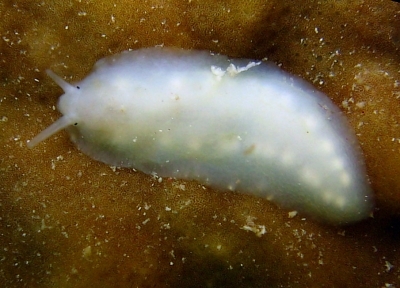
Titiscania limacina Bergh, 1875
Superfamily: NERITOIDEA
Family: Titiscaniidae
DISTRIBUTION
Tropical Indo-Pacific
PHOTO
Marsa Nakari, 1 m, Egypt, Red Sea, 17 July 2008. Length: 1 cm. Photographer: Sylvain Le Bris
Titiscania limacina lacks a shell, and although very slug-like in appearance is a neritoidean snail. It's most common relatives are the intertidal neritids [Nerita spp, Neritina spp] which have heavily calcified shells. There are also terrestrial neritodean snails, such as the Hydrocenidae and Helicinidae.
The mantle cavity is a dorsal pocket just behind the head. It opens forwards, and sometimes the tip of the single gill can be seen poking out. There is a row of whitish glands down each side of dorsum which exude a thick white defensive secretion when the animal is disturbed. It has been reported from shallow waters on coral reefs, but we know little else about its biology.
Authorship detailsRudman, W.B., 2008 (August 16) Titiscania limacina Bergh, 1875. [In] Sea Slug Forum. Australian Museum, Sydney. Available from http://www.seaslugforum.net/find/titiscania
Related messages
Titiscania limacina from the Red Sea
August 18, 2008
From: Sylvain Le Bris
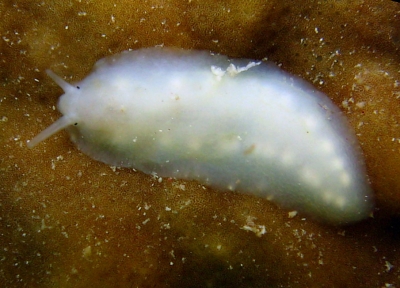
Dear Bill,
Can you help me to identify these slugs because I have no idea !!! They were found on the top of the reef, under rocks.
Locality: Marsa Nakari, 1 m, Egypt, Red Sea, 17 July 2008. Length: 1 cm. Photographer: Sylvain Le Bris.
Regards
Sylvain
lebris.sylvain@gmail.com
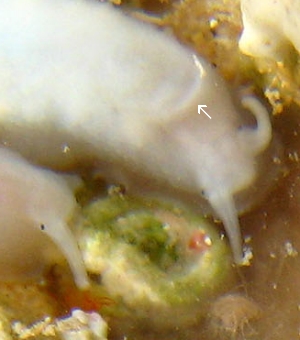
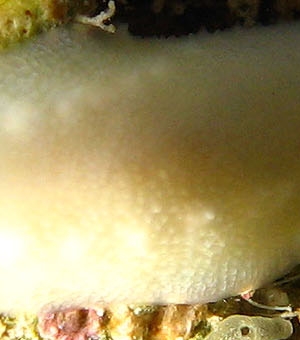
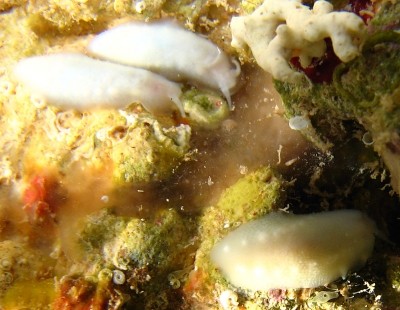
Dear Sylvain,
This is an interesting find. You may be be familiar with species of Nerita, which is a genus of intertidal snails with thick heavily calcified shells and an equally thick calcified operculum or 'door' to seal off the shell opening. It is hard to believe that the shell-less 'slugs' in your photos are not opisthobranch sea-slugs, but are close relatives of Nerita. Your animal is Titiscania limacina Bergh, 1875.
The mantle cavity is a dorsal pocket just behind the head. It opens forwards, and sometimes the tip of the single gill can be seen poking out. I can't see the gill in either of your photos but in one close-up I have an arrow pointing at the edge of the mantle opening. There is a row of whitish glands down each side of dorsum which exude a thick white defensive secretion when the animal is disturbed. It has been reported from shallow waters on coral reefs, in both the tropical Indian and Pacific Oceans, but we know little about its biology.
Best wishes,
Bill Rudman
